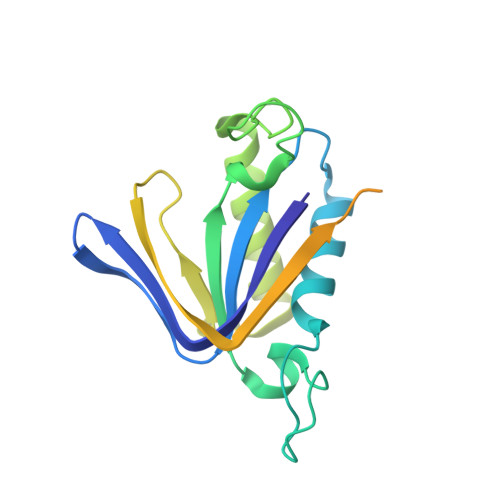Structure and Function of the c-myc DNA-unwinding Element-binding Protein DUE-B.
Kemp, M., Bae, B., Yu, J.P., Ghosh, M., Leffak, M., Nair, S.K.(2007) J Biol Chem 282: 10441-10448
- PubMed: 17264083
- DOI: https://doi.org/10.1074/jbc.M609632200
- Primary Citation of Related Structures:
2OKV - PubMed Abstract:
Local zones of easily unwound DNA are characteristic of prokaryotic and eukaryotic replication origins. The DNA-unwinding element of the human c-myc replication origin is essential for replicator activity and is a target of the DNA-unwinding element-binding protein DUE-B in vivo. We present here the 2.0A crystal structure of DUE-B and complementary biochemical characterization of its biological activity. The structure corresponds to a dimer of the N-terminal domain of the full-length protein and contains many of the structural elements of the nucleotide binding fold. A single magnesium ion resides in the putative active site cavity, which could serve to facilitate ATP hydrolytic activity of this protein. The structure also demonstrates a notable similarity to those of tRNA-editing enzymes. Consistent with this structural homology, the N-terminal core of DUE-B is shown to display both D-aminoacyl-tRNA deacylase activity and ATPase activity. We further demonstrate that the C-terminal portion of the enzyme is disordered and not essential for dimerization. However, this region is essential for DNA binding in vitro and becomes ordered in the presence of DNA.
Organizational Affiliation:
Department of Biochemistry and Molecular Biology, Boonshoft School of Medicine, Wright State University, Dayton, Ohio 45435, USA.















